The 12 Facts About Scottish Fold Cat
1.Not All Scottish Fold’s Ears Are Folded
Despite its name, some Scottish Folds actually grow up to have straight ears. All Scottish fold kittens have straight ears at birth, and the folding occurs sometime between three and four weeks. The ear cartilage will crumble under its own weight and will fold into the distinctly rounded shape the breed is known for. However, some of their ears won’t fold completely, with some having a partial fold or no change to the ears!
2.They Can Come in Any Color
The Scottish fold cat can come in a wide variety of colors and patterns. All colors, from seal to chocolate to the darkest black, are accepted by breed standards. The Cat Fanciers Association says this about the Scottish Fold’s color in their breed standard: “Any genetically possible color and pattern and any combination of genetically possible colors and patterns are allowed.”. This wide variety is probably due to the breed being allowed to be outbred with other breeds.
3.They Can Be Long-haired
In a similar vein to our last fact, the Scottish Fold can also be shown with long hair, and the breed standard for its breed also mentions long hair without any points being deducted for it. The TICA (The International Cat Association) states that the long-haired variety must have hair that’s “soft and (should) stand away from the body,” but due to the nature of these cats, all coat legs are permissible. Both the folded and unfolded ear types can have long hair.
4.They Can Be Bred With Certain Other Cats and Still Be “Pure”
The two main cat fancy groups, TICA and CFA, allow Scottish Folds to be bred with British Shorthair, American Shorthair, and British Longhair cats to expand the breed’s gene pool while retaining their own angelic looks. The presence of the genetic mutation that causes joint problems in this breed means that two Scottish Folds shouldn’t be bred together (particularly true for folded types). The British and American shorthaired breeds share many of the same traits as the Scottish Fold, so the breed can be maintained responsibly while widening the gene pool.
5.Two Folded-Ear Scottish Folds Should Never Be Bred Together
The reason why two Scottish Folds with folded ears should never be bred together is due to the generic mutation they carry, which allows their ear to fold. This gene weakens and breaks down cartilage, meaning that the ears fold over onto themselves. Unfortunately, this gene also causes huge damage to other joints, causing a lot of pain, mobility issues, and quality of life deterioration. Breeding two of these cats together will result in a cat with deformities and abnormalities and progressive pain that worsens over time.
6.They Suffer From Debilitating Joint Problems
Scottish folds all suffer from a range of debilitating joint diseases. The main cause of this is osteochondrodysplasia, a condition in which the joints become degraded, thickened, and fused. The fusing and thickening of the joints in the tail, ankles, and stifles (knees) causes intense pain for the affected cat, leaving some of them unable to walk or even move. This is an inherited problem, and because only one copy of the faulty gene that causes it is needed for the disease to express itself, most Scottish folds suffer from milder symptoms.
7.They Are Very Intelligent
Ranked in intelligence, despite there being no outright tests for feline intelligence, the Scottish Fold consistently shows up in the top ten. The Scottish Fold is known for being friendly, inquisitive, and easily trained, showing its intelligence and openness to learning from its owners.
8.They Don’t Like to be Alone
The Scottish Fold is known for being very clingy to its humans. These cats thrive on the attention and affection of their owners, even suffering from separation anxiety if they’re left alone for periods of time. These cats do better with some feline company, even another of their own breed, to keep them from feeling lonely. Just make sure they’re both neutered, as two Scottish Folds shouldn’t be bred together.
9.They All Came From One Cat
The entire lineage of purebred Scottish Folds can be traced back to one barn cat—Suzie. Suzie was a white barn cat belonging to a couple who lived in Perthshire, Scotland, where she gave birth to a litter of folded-ear kittens. These were so endearing to a local cat fancy that they took two kittens from her (of different litters) and bred them, creating the start of the breed.
10.They Are Banned In Several Countries
Because of the poor health of nearly all Scottish Fold cats, the breed has actually been banned in several countries, such as Belgium. While the breed isn’t prohibited in America, the Governing Council of the Cat Fancy (UK) and the Fédération Internationale Féline have both disqualified the breed and taken them off their register because of the apparent cruelty of breeding these cats.
1.Not All Scottish Fold’s Ears Are Folded
Despite its name, some Scottish Folds actually grow up to have straight ears. All Scottish fold kittens have straight ears at birth, and the folding occurs sometime between three and four weeks. The ear cartilage will crumble under its own weight and will fold into the distinctly rounded shape the breed is known for. However, some of their ears won’t fold completely, with some having a partial fold or no change to the ears!
2.They Can Come in Any Color
The Scottish fold cat can come in a wide variety of colors and patterns. All colors, from seal to chocolate to the darkest black, are accepted by breed standards. The Cat Fanciers Association says this about the Scottish Fold’s color in their breed standard: “Any genetically possible color and pattern and any combination of genetically possible colors and patterns are allowed.”. This wide variety is probably due to the breed being allowed to be outbred with other breeds.
3.They Can Be Long-haired
In a similar vein to our last fact, the Scottish Fold can also be shown with long hair, and the breed standard for its breed also mentions long hair without any points being deducted for it. The TICA (The International Cat Association) states that the long-haired variety must have hair that’s “soft and (should) stand away from the body,” but due to the nature of these cats, all coat legs are permissible. Both the folded and unfolded ear types can have long hair.
4.They Can Be Bred With Certain Other Cats and Still Be “Pure”
The two main cat fancy groups, TICA and CFA, allow Scottish Folds to be bred with British Shorthair, American Shorthair, and British Longhair cats to expand the breed’s gene pool while retaining their own angelic looks. The presence of the genetic mutation that causes joint problems in this breed means that two Scottish Folds shouldn’t be bred together (particularly true for folded types). The British and American shorthaired breeds share many of the same traits as the Scottish Fold, so the breed can be maintained responsibly while widening the gene pool.
5.Two Folded-Ear Scottish Folds Should Never Be Bred Together
The reason why two Scottish Folds with folded ears should never be bred together is due to the generic mutation they carry, which allows their ear to fold. This gene weakens and breaks down cartilage, meaning that the ears fold over onto themselves. Unfortunately, this gene also causes huge damage to other joints, causing a lot of pain, mobility issues, and quality of life deterioration. Breeding two of these cats together will result in a cat with deformities and abnormalities and progressive pain that worsens over time.
6.They Suffer From Debilitating Joint Problems
Scottish folds all suffer from a range of debilitating joint diseases. The main cause of this is osteochondrodysplasia, a condition in which the joints become degraded, thickened, and fused. The fusing and thickening of the joints in the tail, ankles, and stifles (knees) causes intense pain for the affected cat, leaving some of them unable to walk or even move. This is an inherited problem, and because only one copy of the faulty gene that causes it is needed for the disease to express itself, most Scottish folds suffer from milder symptoms.
7.They Are Very Intelligent
Ranked in intelligence, despite there being no outright tests for feline intelligence, the Scottish Fold consistently shows up in the top ten. The Scottish Fold is known for being friendly, inquisitive, and easily trained, showing its intelligence and openness to learning from its owners.
8.They Don’t Like to be Alone
The Scottish Fold is known for being very clingy to its humans. These cats thrive on the attention and affection of their owners, even suffering from separation anxiety if they’re left alone for periods of time. These cats do better with some feline company, even another of their own breed, to keep them from feeling lonely. Just make sure they’re both neutered, as two Scottish Folds shouldn’t be bred together.
9.They All Came From One Cat
The entire lineage of purebred Scottish Folds can be traced back to one barn cat—Suzie. Suzie was a white barn cat belonging to a couple who lived in Perthshire, Scotland, where she gave birth to a litter of folded-ear kittens. These were so endearing to a local cat fancy that they took two kittens from her (of different litters) and bred them, creating the start of the breed.
10.They Are Banned In Several Countries
Because of the poor health of nearly all Scottish Fold cats, the breed has actually been banned in several countries, such as Belgium. While the breed isn’t prohibited in America, the Governing Council of the Cat Fancy (UK) and the Fédération Internationale Féline have both disqualified the breed and taken them off their register because of the apparent cruelty of breeding these cats.
- Catégories
- Chats de Race Scottish Fold
- Mots-clés
- scottish fold, scottish fold cat, scottish folds cats








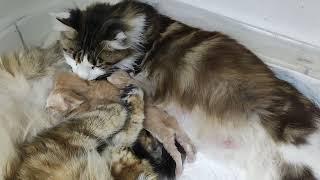
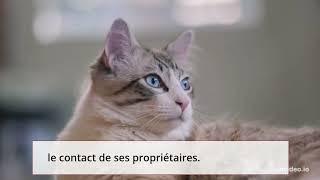
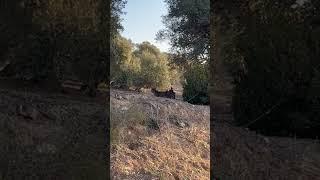
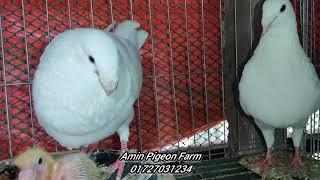
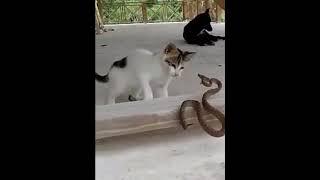


Commentaires